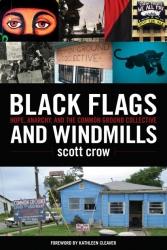 This is a roller-coaster read from page one, following the terrifying, exhausting, inspiring and ultimately hopeful story of the Common Ground Collective in New Orleans.
This is a roller-coaster read from page one, following the terrifying, exhausting, inspiring and ultimately hopeful story of the Common Ground Collective in New Orleans.
Now nearly 10 years old, the collective began when activists from Texas went to the poor districts of New Orleans to find friends of theirs, former Black Panthers, after Hurricane Katrina hit. Among the floodwaters and devastated neighbourhoods, they found oppressed minority communities abandoned by the authorities, left vulnerable to the consequences of natural disaster and gangs from richer, white neighbourhoods.
In response, the friends set about putting in place a comprehensive, bottom-up, solidarity-based humanitarian aid operation. They confronted racist thugs, apathy by large NGOs, and opposition from failed state authorities bent on stopping them in order to prop up their own power structures. In doing so, they faced the challenges of burnout and exhaustion, confronted the clash of naïve idealism with privilege and difference, and came up hard against what they saw as an unavoidable need for ‘armed self-defence’.
Part moving memoir and love story (crow talks of operating from ‘emergency hearts’ to heal the wounds caused by state oppression of minorities), part radical history, this is also a how-to guide for direct community action. It introduces the revolutionary organisations that inspired the founders of Common Ground (the Black Panthers, the Zapatistas), and works through issues around non-hierarchical organising, and working in solidarity with minority communities.
At the heart of the book is the radical spirit that led to the founding of Common Ground round a dining room table at a moment of emergency like no other. It will inspire any activist who reads it, and I challenge any reader who picks it up to put it down before finishing it.
The biggest challenge for readers of Peace News is likely to be the author’s decision to carry a gun. Crow says his decision has its roots in working with minority communities facing threats to their lives – from racist thugs, and from a racist state that will not defend them.
In the radical anti-fascist Anti Racist Action network, activists faced those same mortal threats, and took up arms to defend themselves.
In New Orleans, the military flew helicopters over the poor lower districts of the city but didn’t evacuate people, and police officers shot to kill. In this context, activists working up against a failing state desperate to hide that failure and stop anyone challenging it with grassroots action, felt armed self-defence had become necessary. But crow recognises how it restricts a movement’s creativity: with regard to the ARA he comments: ‘It was easier to get people to the gun range than confront our organising models.’ In the end he concludes that ‘the discussion on self-defence should be about when to use it, and how to minimise it, not about whether it is appropriate.’
Perhaps the most we can do is hope that such situations never arise.


